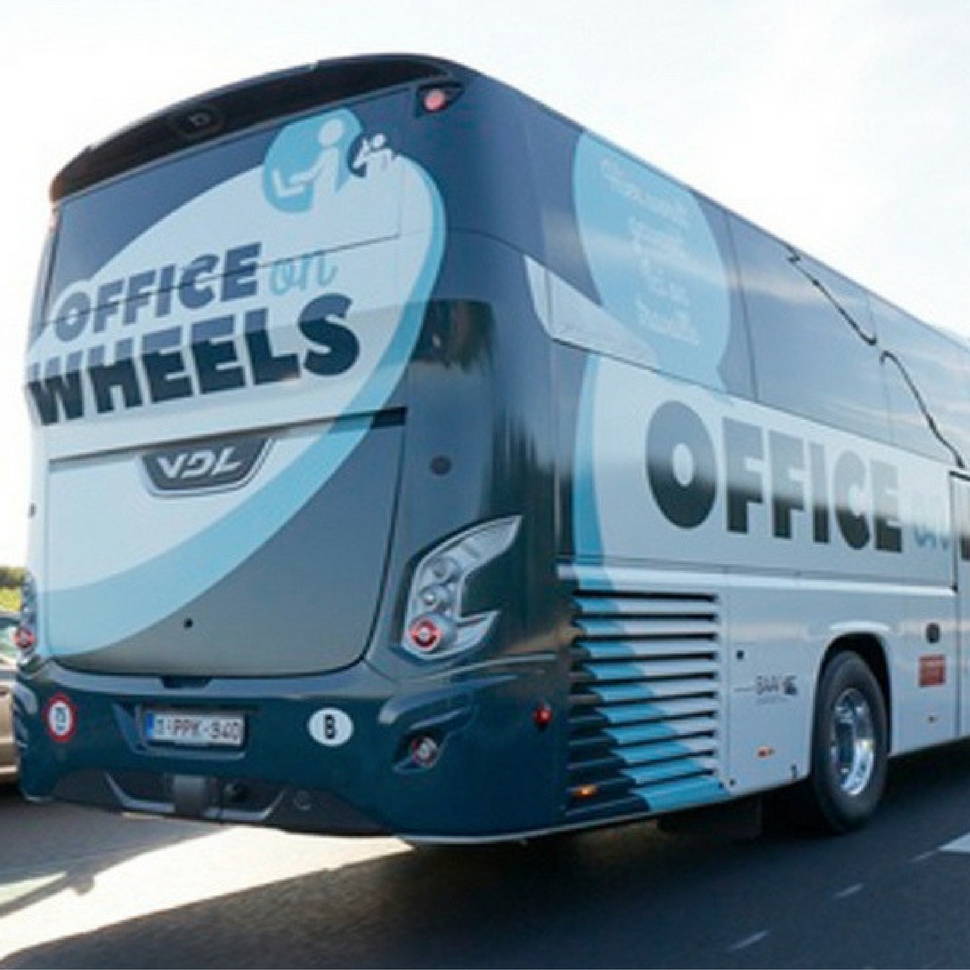Feature image credits
Remember when Regus put its name to driverless car technology?
They were certainly onto something. Autonomous vehicles open up a world of opportunity for rush hour commuters, offering the potential to (safely) increase productivity on the road rather than wasting time drumming your fingers on the wheel.
The technology is already making its way onto our roads, but with it comes a complex web of road safety challenges, legal precautions, insurance nightmares and endless red tape.
Navigating around the mindboggling ramifications of driverless cars is the humble shuttle bus.
Very much human-driven and fulfilling a somewhat old-fashioned mode of public transport for office workers, it seems an unlikely candidate to compete against cutting-edge autonomous technology.
But Belgium’s Flanders Institute for Mobility begs to differ.
Its ‘Office On Wheels’ project plans to transport commuters to work by shuttle bus with various workspace utilities at their disposal, such as train-style tables, secure Wi-Fi, printers and coffee.
Following a daily bus route that includes hard-to-reach business parks, the prototype vehicle is set for a 6-month test run. After full analysis, it could then be adapted into a fully functioning model for bus companies and public transport operators.
The ‘Office on Wheels’ project aims to investigate:
- The feasibility of a state-of-the-art office bus as a means of transportation for commuter traffic;
- The feasibility of a vast and secure internet connection for all travellers;
- How to turn travel time into work time;
- Which routes can be considered for the office bus;
- What the secondary conditions are for a feasible business model.
Supported by a long list of partnering companies, the project is accelerating and could provide a swift and much-needed solution. According to the Onderzoek Verplaatsingsgedrag Vlaanderen, approximately 30% of the working population spends more than 30 minutes commuting while 9% sit in their cars for over an hour, each way.
Flanders Institute for Mobility aims to enable commuters to do their office job while commuting, not to mention easing rush-hour congestion and reducing vehicle pollution.
With ride-sharing solutions taking centre stage and new transport solutions hitting the market at a rate of knots, driven by the Sharing Economy and an ever-growing need for greater efficiency and productivity, the workplace of the future could well be driven by the transport industry. Or is it the other way around?


 Dr. Gleb Tsipursky – The Office Whisperer
Dr. Gleb Tsipursky – The Office Whisperer Nirit Cohen – WorkFutures
Nirit Cohen – WorkFutures Angela Howard – Culture Expert
Angela Howard – Culture Expert Drew Jones – Design & Innovation
Drew Jones – Design & Innovation Jonathan Price – CRE & Flex Expert
Jonathan Price – CRE & Flex Expert












